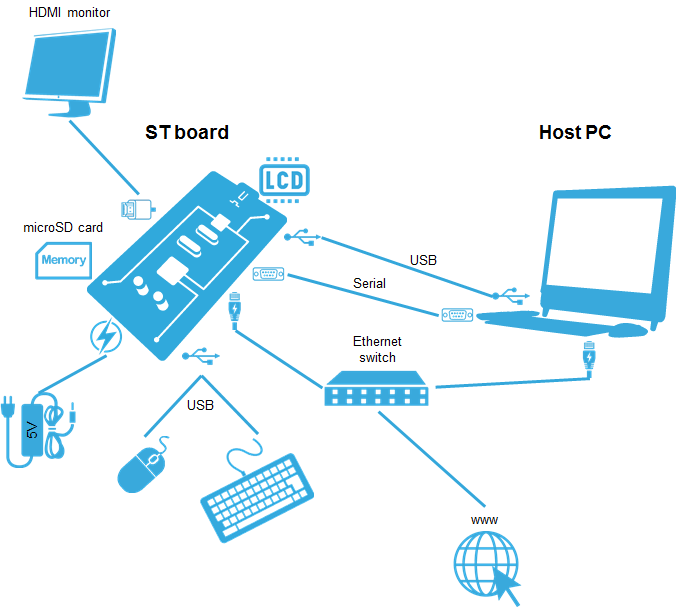Template:ArticleMainWriter Template:ArticleApprovedVersion
| Delivery for Android distribution coming soon |
1. Distribution Package content[edit source]
If you are not yet familiar with the STM32MPU Embedded Software for Android distribution and its Packages, please read the following articles:
- Which Package better suits your needs (and especially the Distribution Package chapter)
- STM32MPU Embedded Software distribution for Android
To sum up, this Distribution Package provides:
- an Android build framework (aka distribution builder)
- for the STM32MPU distribution for Android (development on Arm Cortex-A processor), all pieces of software in source code: the BSP (Linux kernel, U-Boot, TF-A, optionally OP-TEE), and the application frameworks.
- for the STM32Cube MPU Package (development on Arm Cortex-M processor), all pieces of software in source code: BSP, HAL, middlewares and applications
- a toolset to tune the system for your needs, and to handle the built image (e.g. STM32CubeProgrammer to install the built image on the board)
2. Distribution Package step-by-step overview[edit source]
3. Checking the prerequisites[edit source]
3.1. Knowledges[edit source]
The STM32MP1 Distribution Package aims at creating an Android distribution for the targeted product: solid knowledges about Linux and Android are recommended to make the most of this Package.
The STM32MPU distribution for Android is an Android distribution based on the Android build framework: a short introduction about Android is available in AOSP[1].
Having a look at the STM32MPU Embedded Software for Android architecture overview is also highly recommended.
3.2. Development setup[edit source]
The recommended setup for the development PC (host) is specified in the following article: PC prerequisites.
Whatever the development platform (board) and development PC (host) used, the range of possible development setups is illustrated by the picture below.
The following components are mandatory:
- Host PC for cross-compilation and cross-debugging, installed as specified above
- Board assembled and configured as specified in the associated Starter Package article
- Mass storage device (for example, microSD card) to load and update the software images (binaries)
The following components are optional, but recommended:
- A serial link between the host PC (through Terminal program) and the board for traces (even early boot traces), and access to the board from the remote PC (command lines)
- An Ethernet link between the host PC and the board for cross-development and cross-debugging through a local network. This is an alternative or a complement to the serial (or USB) link
- A display connected to the board, depending on the technologies available on the board: DSI LCD display, HDMI monitor (or TV) and so on
- A mouse and a keyboard connected through USB ports
Additional optional components can be added by means of the connectivity capabilities of the board: cameras, displays, JTAG, sensors, actuators, and much more.
